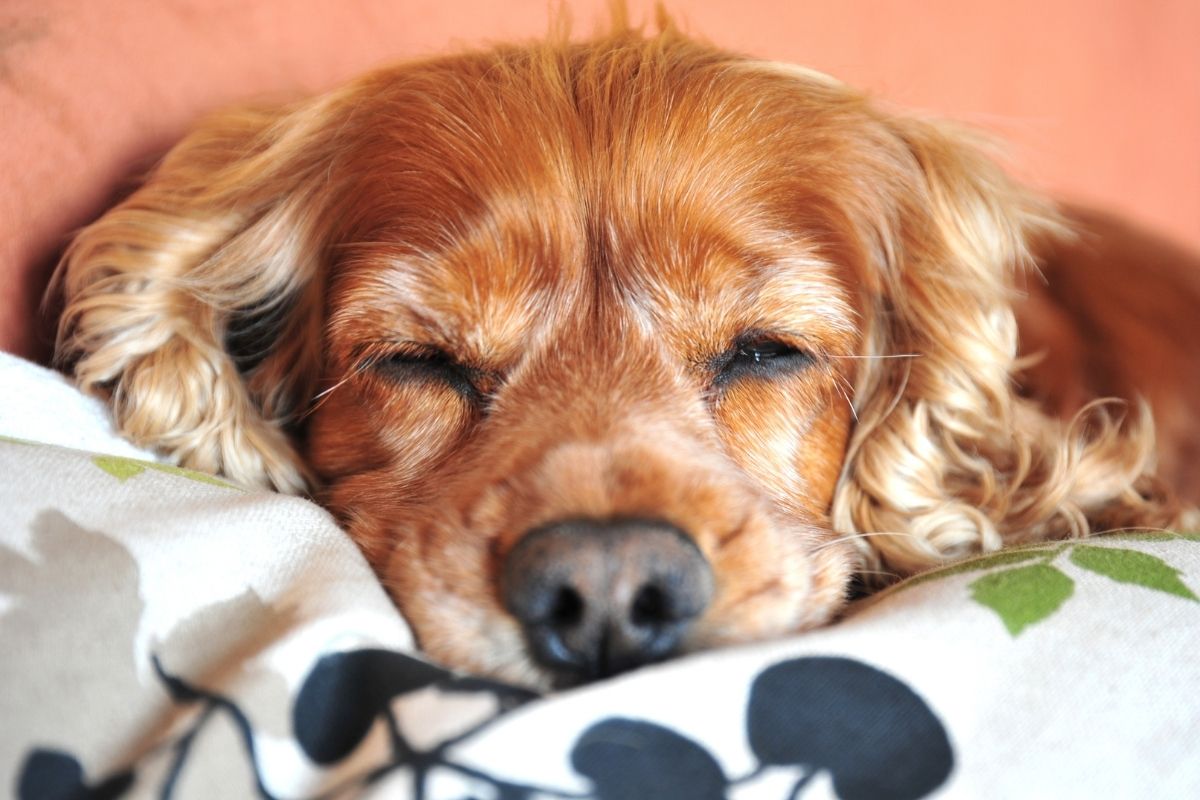Cocker spaniels can be in season at any time, but the average age is between 8 months and a year. After her first season she will have further ones at, on average, every six months. If your dog reaches two years of age without going into season, you should talk to your veterinarian about it. She may have gone through a silent period where no outward symptoms or indicators exist.
If you have a female Cocker spaniel then it is important to understand and recognise the symptoms and times when she comes into season ( heat ) so that you can look after her properly.
If you wish to breed from your bitch or remove the risk of unwanted attention from male dogs, then you’ll need to identify when she is most receptive to breeding.
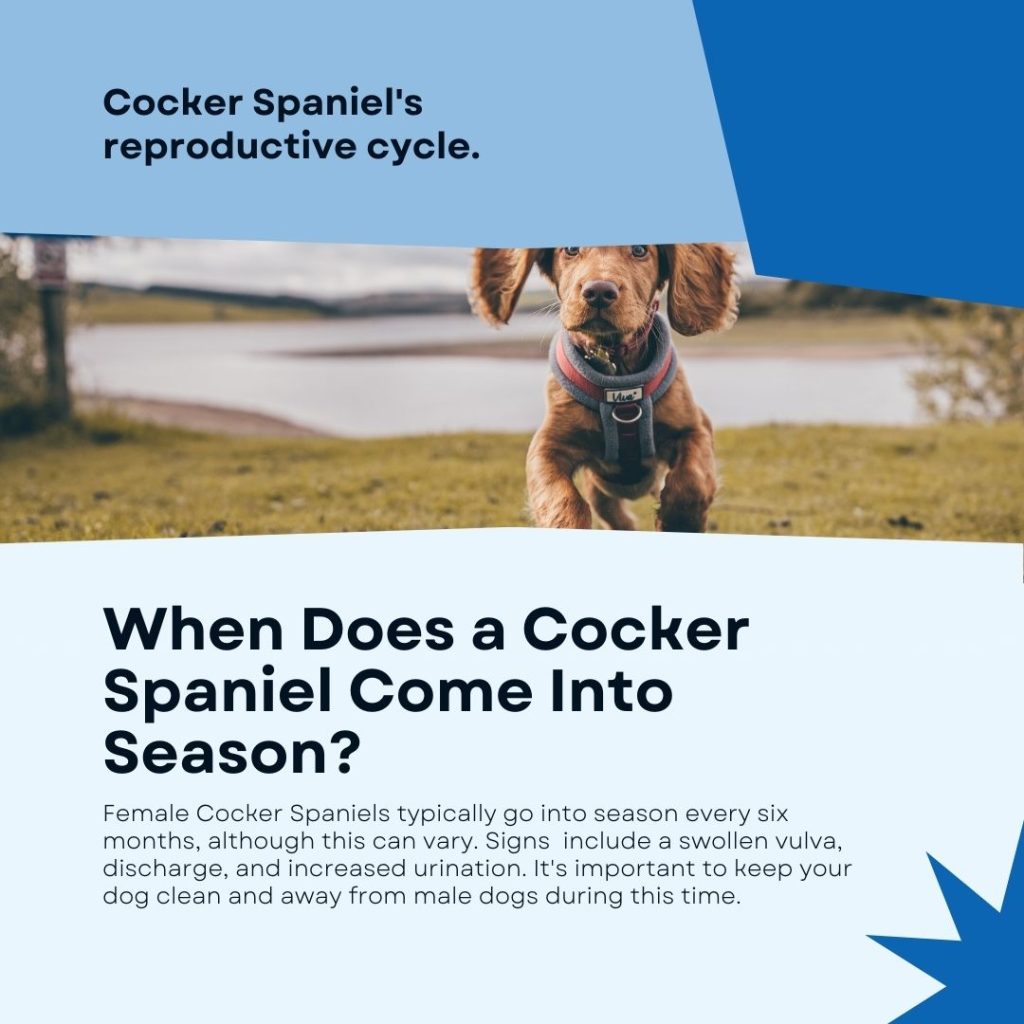
When does a Cocker spaniel come into season?
When a spaniel is about to come into heat, it will have milky discharge from the vulva for several days.
She may lose interest in food and become restless.
Her vulva becomes swollen and her vagina discharges a bloody or pinkish fluid.
These signs usually begin at 6 months of age , but this should only be taken as an average guideline as dogs differ and she could come into season at a later age.
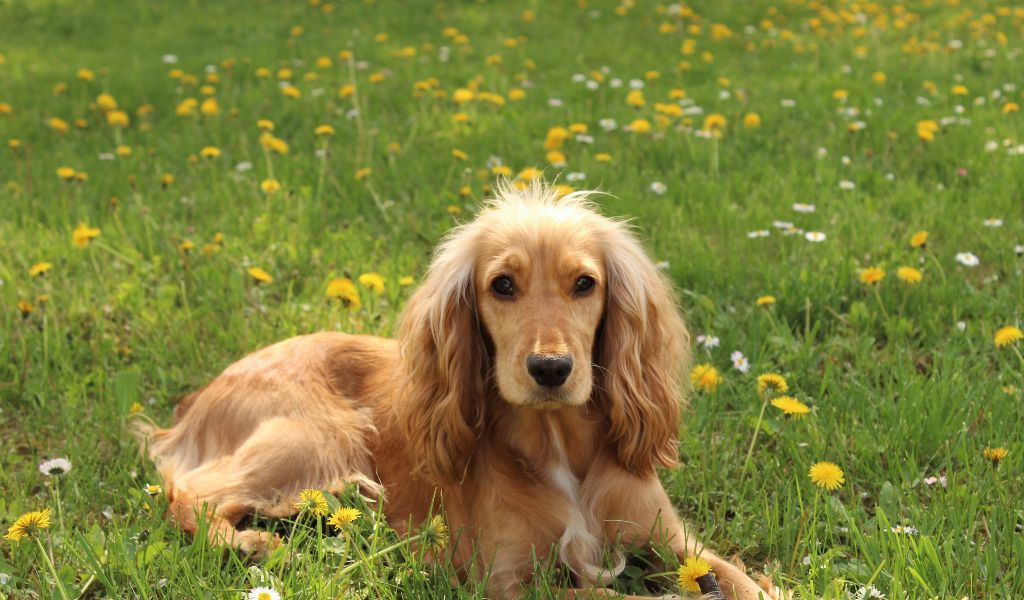
How do I know if my Cocker spaniel is in season?
Here are some signs that your Cocker Spaniel might be in season:
- Swollen Vulva
Swelling: The vulva will become noticeably swollen.
Discharge: You might observe a bloody discharge from the vulva. The discharge may start off quite bloody and then change to a straw-coloured liquid as the heat progresses. - Behavioural Changes
Affectionate Behaviour: She may become more affectionate or clingy towards you.
Agitation: She might seem restless, anxious, or more alert than usual.
Flirtatious Behaviour: She may exhibit flirtatious behaviour towards male dogs, such as raising her rump and moving her tail to the side.
Aggression: Alternatively, she might become more aggressive or snappy, especially towards other female dogs. - Frequent Urination
She may urinate more frequently than usual. This is a way of spreading her scent to signal to male dogs that she is in season. - Licking
Excessive licking of the genital area is common as she tries to clean herself. - Appetite Changes
She may experience changes in appetite, either eating more or less than usual. - Nesting Behaviour
Some dogs will exhibit nesting behaviours, such as gathering toys or bedding and being protective over them. - Attraction of Male Dogs
Male dogs may become more interested in her, and you might notice them hanging around your property.
How long does a Cocker spaniel’s season last?
A Cocker Spaniel’s season, or heat cycle, typically lasts about three weeks or up to a month, but this can vary slightly depending on the individual dog.
The heat cycle is divided into different stages, each with its own distinct behaviours and physical changes.
Understanding the reproductive cycle of Cocker spaniels
Before we dive into the timing of when Cocker Spaniels come into season, it’s important to understand their reproductive cycle.
A female Cocker Spaniel‘s reproductive cycle can be divided into four stages:
Proestrus
Estrus
Diestrus
Anestrus
Let’s take a closer look at each stage:
Proestrus—Start of heat. Lasts 7 to 10 days. Vulva swells and blood flows. Females attract males but will not allow mounting.
Estrus—Mating period. Lasts 5 to 10 days. Blood flow lessens and then stops. Females attract and accept males. Ovulation occurs during this time, usually 2 to 3 days after mating.
Diestrus. The period 10 to 140 days after heat, when the dog is either pregnant or in a resting phase.
Anestrus. The resting period between diestrus and the next heat cycle.
Proestrus:
This stage lasts for about 9-10 days and is characterized by the swelling of the vulva and the discharge of bloody fluid.
Male dogs will be attracted to her during this time, but the female Cocker Spaniel is not yet ready to mate.
Estrus:
This stage lasts for about 7-10 days and is when the female Cocker Spaniel is fertile and ready to mate.
The discharge during this stage changes from bloody to straw-coloured and becomes more viscous.
Diestrus:
This stage lasts for about 60 days and is the period when the female Cocker Spaniel is pregnant or not pregnant.
If she is not pregnant, she will go into heat again after this stage.
Anestrus:
This stage lasts for about 4-5 months and is the period of sexual inactivity.
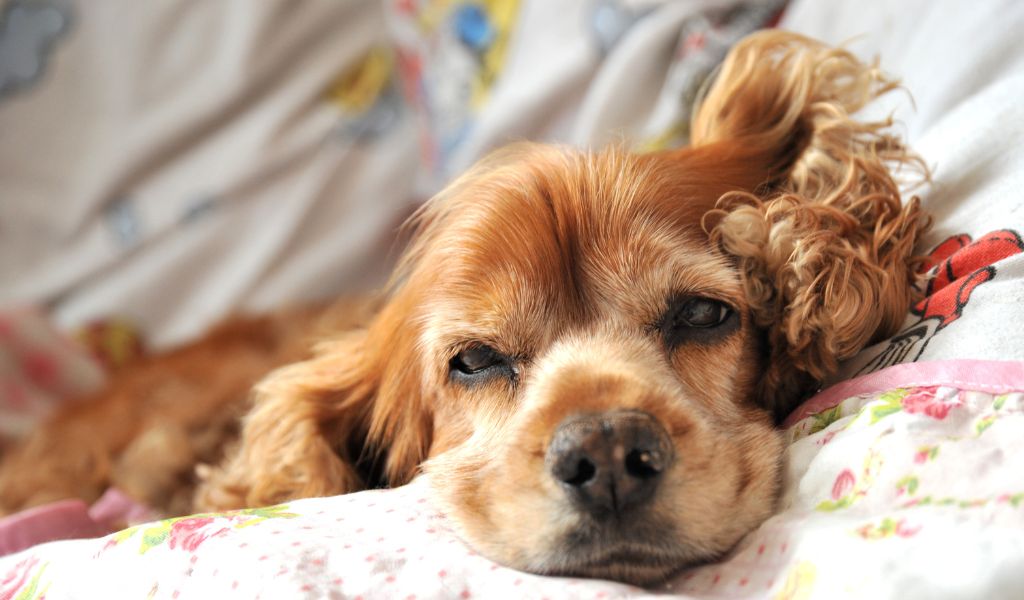
Signs to watch out for with your female Cocker spaniel
Many bitches display some behavioural changes before they come into season.
You’ll often find that she may become clingy and eat more or less. She may also want to sleep more frequently or could even become more active.
On many occasions bitches will slip with their housetraining and will ‘mark’ areas in the home.
If you do witness any changes then it could be a sign that she is due to come into season.
Physical signs
As her season approaches the dog’s vulva will become swollen. This may or may not be easy to see.
Her teats could also become swollen.
This is normally when she will begin to bleed and you should try to spot this as accurately as you are able.
This is important if you are planning puppies – it is also vital when keeping her away from male dogs.
She will bleed for about ten days, but sometimes this can be a shorter or longer period of time.
Towards the end of the bleeding, the discharge will become a clear fluid.
If you notice anything other than blood colour or clear then you should talk to your vet in case your dog has an infection.
COCKER SPANIEL SEASON ADVICE
here’s a list of advice and information related to when a Cocker Spaniel might come into season:
Understanding the Timing
First Season: Cocker Spaniels typically have their first season between 6-12 months of age.
Frequency: They usually come into season every six months, but some dogs can have a cycle that’s slightly shorter or longer.
Recognising the Signs
Physical Changes: Look for a swollen vulva and a bloody or straw-coloured discharge.
Behavioural Changes: Monitor for alterations in behaviour, such as clinginess, restlessness, or aggression.
Increased Attention from Males: Male dogs may show a heightened interest in your Cocker Spaniel.
Managing the Season
Isolation from Male Dogs: Ensure she is kept away from male dogs to prevent unwanted pregnancies.
Hygiene: Consider using doggy diapers to manage discharge and maintain cleanliness.
Comfort: Provide extra comfort and attention as she may be feeling anxious or unsettled.
Health and Safety
Secure Environment: Make sure your garden or yard is secure to prevent escapes or unwanted visits from male dogs.
Regular Exercise: Continue to provide regular exercise but ensure she is on a lead and under control at all times.
Veterinary Advice: Consult your vet if you notice any unusual behaviours or physical changes, or if you have concerns about her health during her season.
Breeding Considerations
Breeding Age: If you plan to breed, consult with a vet regarding the appropriate age and health considerations.
Health Checks: Ensure both breeding partners have been health checked and are free from hereditary conditions.
Puppy Planning: Be prepared for the possibility of puppies and ensure you have the resources and time to care for them.
Spaying
Consider Spaying: If you do not intend to breed from your Cocker Spaniel, consider having her spayed to prevent seasons and associated behaviours.
Post-Spaying Care: Understand and be prepared for post-spaying care and management.
Record Keeping
Track Her Cycle: Keep a record of your Cocker Spaniel’s heat cycles to predict and prepare for future seasons.
Additional Support
Join a Community: Consider joining forums or social media groups related to Cocker Spaniels for additional support and advice.
Professional Advice: Seek advice from professional breeders or a canine reproductive specialist for detailed insights.
Remember that managing a dog in season requires patience and understanding. Always prioritise her comfort and safety, and consult with veterinary professionals to ensure her health and well-being throughout her cycle.
When is she ready for mating?
When the bleeding ends, this is the time that your bitch is ready for mating.
If you are planning a litter then the next ten days are when your dog should be mated.
If a litter is not intended then, for the next ten days, and ideally longer, you will need to keep your bitch under supervision – away from male dogs, of all breeds – this includes kennel mates, brothers, father, uncles etc.
Male dogs ( and most bitches ) are not fussy so be very careful if you want to avoid accidental puppies.
Do not leave her unsupervised anywhere, including gardens or yards – dogs can be really persistent and ingenious at gaining access to bitches that are in season.
Recommended reading for breeders
If you’re new to dog breeding or want to improve your knowledge then these books are an excellent source of information and reference.
How to care for your Cocker spaniel during her season
When your Cocker Spaniel is in season, it’s important to take extra care of her to ensure her health and well-being.
Here are some tips to keep in mind:
- Keep your dog on a lead when outside
- Keep your dog away from other male dogs to prevent unwanted mating.
- Do not bathe your dog during her season, as this can disrupt the natural balance of her hormones and increase the risk of infection.
- Use sanitary pads or special doggie diapers to prevent blood from staining your furniture or carpets.
- Keep your dog’s environment clean to prevent infection, and wipe her genital area with a damp cloth daily.
- Monitor your dog’s behaviour closely, as she may be more prone to anxiety or restlessness during this time.
What can I do if my bitch is accidentally mated?
You should contact your vet immediately as they can administer a drug that acts like a ‘morning after pill.
This happened with one of my Springer spaniel bitches many years ago but the injection did not work as we were late in getting her to the vet.
Thankfully the dog was also a Springer spaniel who lived next door.
Prevention is always better than cure, but accidents do happen and both dogs and bitches can be devious and overly creative at gaining access to each other in these circumstances.
How often does a Cocker spaniel go into heat?
It is not unusual for a spaniel to go into heat twice in one year.
However, if this happens then you should be aware that there could be an underlying health issue. Seek advice from your vet.
On the whole the majority of bitches will have just one season per year, however, it is possible to have two seasons in the same year.
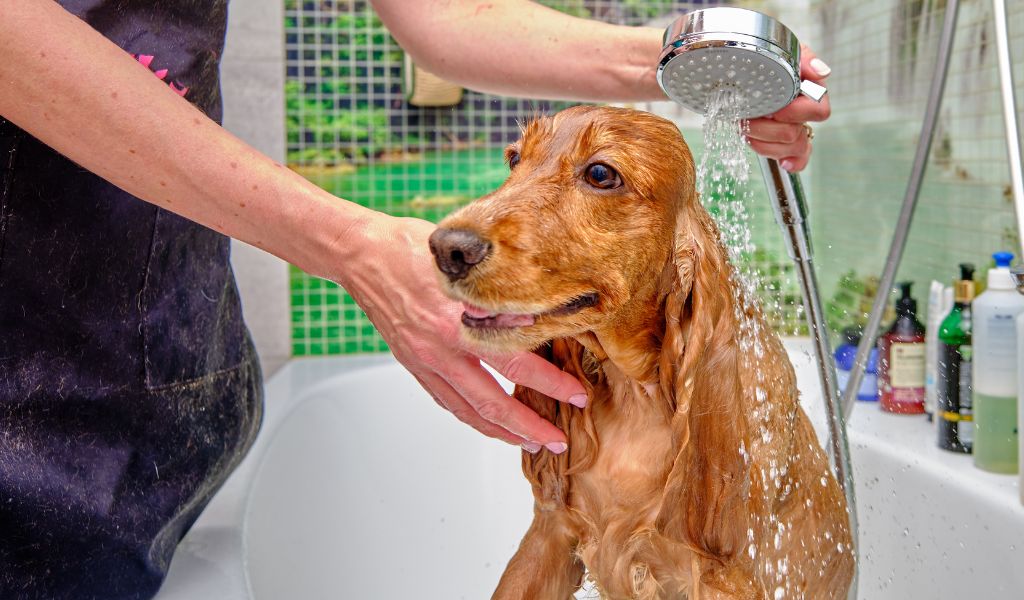
What is a silent season?
A silent season is where the bitch does not have a period of oestrus or heat.
Many females that are used for breeding will have a silent season between one and three years of age.
It is possible to mate a bitch during these silent seasons but you should talk to your vet beforehand as it would be advisable to check that she is in good health and that her uterus is free of infection.
Frequently asked questions
What are the signs that indicate my Cocker Spaniel is coming into season?
Some signs include a change in behaviour, increased urination, a swollen vulva, and some minor bleeding. It’s vital to observe your pet regularly so you can quickly notice these changes.
How often does a Cocker Spaniel go into heat, and at what age does it start?
Cocker Spaniels generally go into heat twice a year, roughly every six months. The first heat typically occurs between 6 to 9 months of age, but it can sometimes happen as late as 14 months.
What steps should I take when my Cocker Spaniel is in season?
Maintain regular exercise but avoid public places to prevent unwanted attention from male dogs. Ensure she has a comfortable space at home, keep her clean, and monitor her health. Consult your vet if you notice any unusual signs.
How can I manage the minor bleeding during my Cocker Spaniel’s heat cycle?
Using dog-specific pads can help manage bleeding. Regular cleaning of her bedding and living spaces will also help to maintain hygiene and comfort during this period.
How long does a Cocker Spaniel’s season last?
A Cocker Spaniel’s season can last for about 21-24 days, although this can also vary.
Can I bathe my Cocker Spaniel during her season?
It’s recommended to avoid bathing your Cocker Spaniel during her season, as this can disrupt the natural balance of her hormones and increase the risk of infection.
Final Words
I hope that you now have a better understanding of what is happening with your female Cocker spaniel when she comes into season.
It is important to keep her away if there are any male dogs in the vicinity, even if they are kennel mates or brothers. Dogs aren’t fussy.
Ten days after the bleeding has stopped this should be the time for mating.
As with all things concerning your dog’s health and wellbeing, you should always speak to and follow the advice of your vet who will understand your pet and is qualified to provide professional opinions and any relevant or required treatment.

